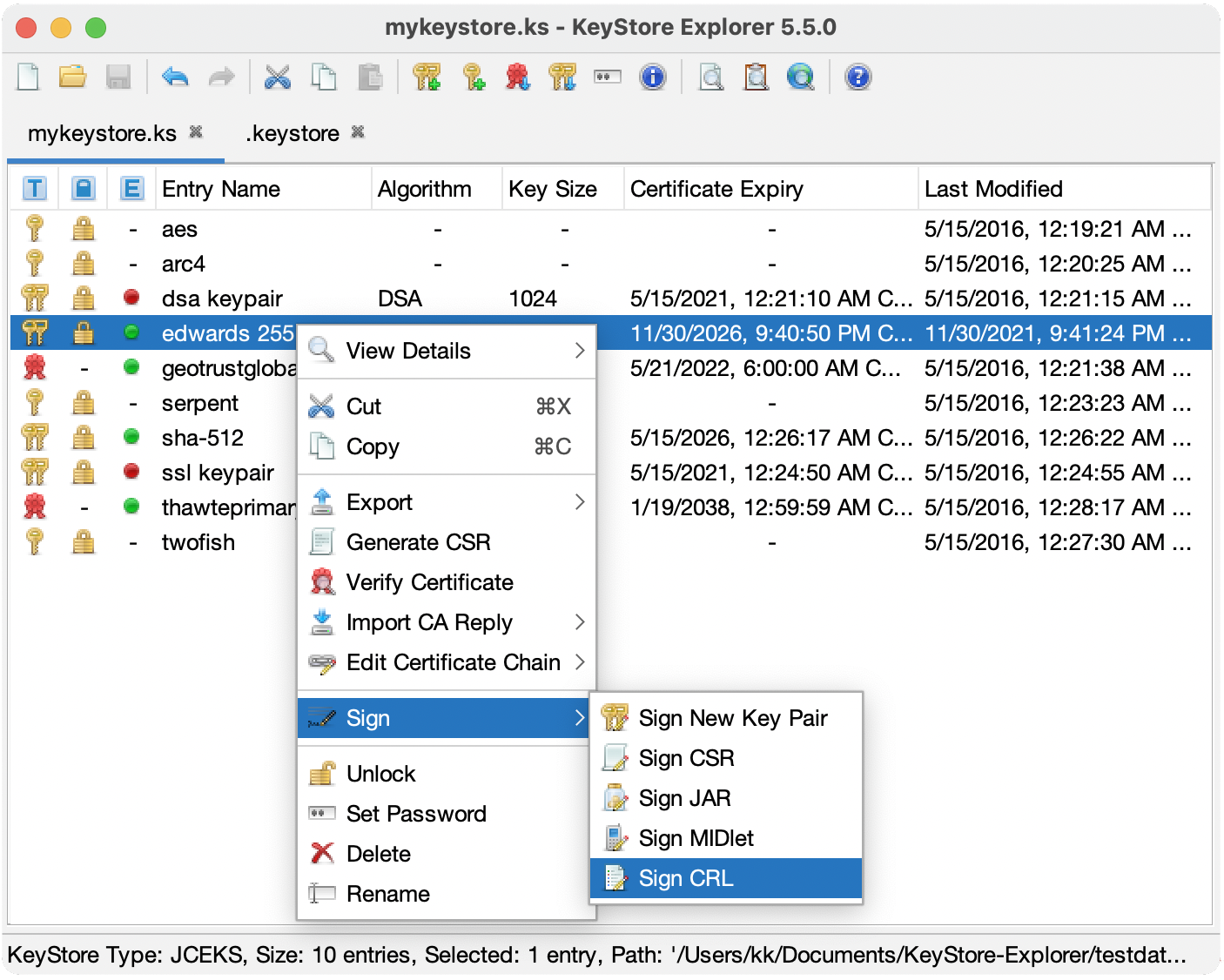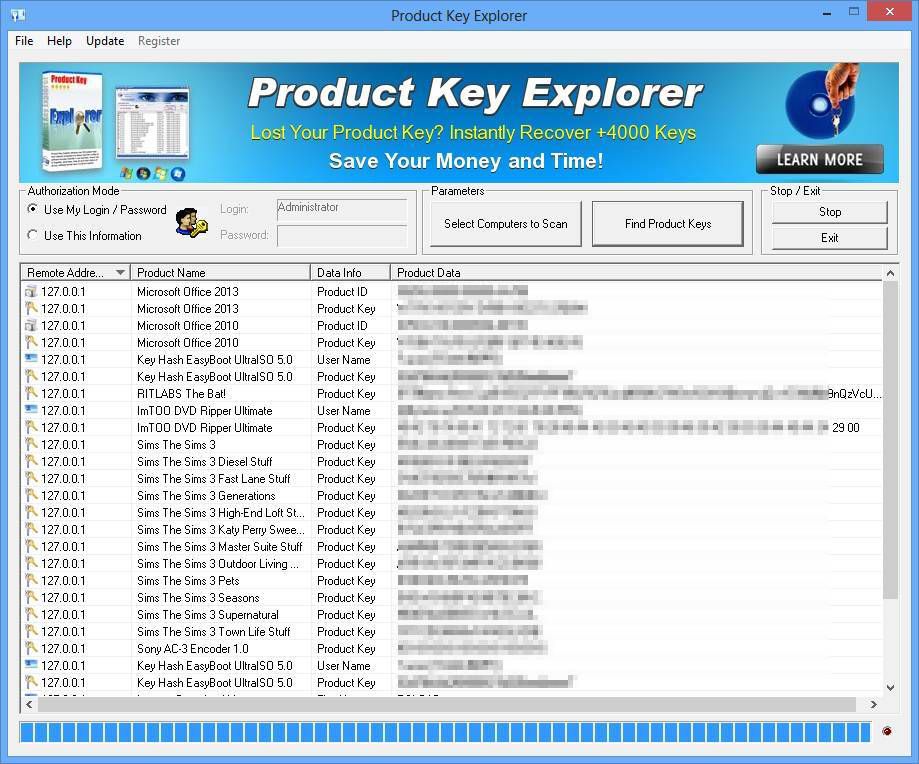
#Keystore explorer 5.2.2 install
(The current version is 5.2.2) and install it on the RUM Engine server. Importing the APM/BSM Certificate into the RUM EngineĬopy the saved/downloaded certificate (e.g., APM_cert) to the RUM Engine server.ĭownload KeyStore Explorer from the internet. The export was successful message appears. Click Browse and enter a meaningful name (e.g., APM_cert) to save the file locally. Click the Certificate section as shown in the screenshot below. (Replace with your server name – Data collectors like RUM)Ī.

(Replace with your server name – BSM/APM Server name) Open the supported browser and browse to the server with HTTPS as shown in the examples below. The steps listed below explain how the second task ( Getting the client to trust the certificate served by the server) can be easily accomplished. Real User Monitor 9.31 Hardening Guide (Chapter 7).Getting the client to trust the certificate served by the serverįor the first task, refer to the Hardening Guides for APM and RUM:.Getting the server to work with HTTPS connections and, in the process, serve up its public certificate.Enabling HTTPS between any client and a server involves the following tasks: This connection can be hardened to use HTTPS. Being a visual tool, KeyStore Explorer enables easy analysis and modifications of TrustStores, thereby simplifying the overall hardening process.īy default, the RUM Engine connects to the APM Gateway server using HTTP connections (and vice versa).
#Keystore explorer 5.2.2 license
This can be used freely under the terms of GNU General Public License version 3. KeyStore Explorer presents their functionality, and more, via an intuitive graphical user interface. KeyStore Explorer is an open source GUI replacement for the Java command-line utilities keytool and jarsigner. This document showcases the use of an external tool, KeyStore Explorer, to add trusted self-signed certificates to the RUM Engine as well as APM Gateway servers. Detailed steps for generating and exchanging certificates are described in the RUM Hardening Guide. So the problem was between the parent project and its children projects, not the fault of the maven dependency.The information in this document is useful when you create HTTPs communication between a RUM Engine server and an APM/BSM server.

What it actually was: Parent project 5.2.2 -x-> Children projects 5.1.3 -> Other project 75.1.1 What I was thinking it was: Parent project 5.2.2 -> Children projects 5.2.2 -x-> Other project 75.1.3

Thus the child projects were built based on an old snapshot, referencing an older version of the dependency (the other project). The version in the pom.xml of my main project had been updated, but not the version in the pom.xml of its child projects. I've also tried forcing the maven-compiler-plugin version to 3.10.1 but it's not fixing the problem. I tried specifying versions: 75.1.2, 75.1.3, 75.1.4-SNAPSHOT in the pom.xml, but it always uses 75.1.1. m2 folder, it downloads it again at each build.Īnd of course, the build fails due to a missing symbol (present only after 75.1.1). When I delete the corresponding folder 75.1.1 from the. The dependency to the other project is defined only at that one place. I've looked for that version 75.1.1 and it's mentionned nowhere in the project. Downloaded from maven-local: (329 kB at 918 kB/s) Downloaded from maven-local: (6.0 kB at 19 kB/s) I specified dependency version 75.1.3 in my pom.xml pointing to one of my other projects: īut when I maven build (clean install) the main project, maven always downloads some other version 75.1.1:.


 0 kommentar(er)
0 kommentar(er)
